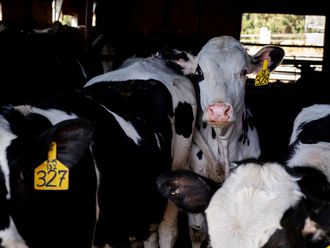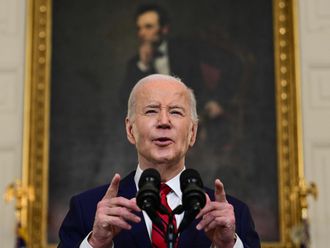
Washington: She was the world’s most beloved widow. And then that widow was gone. Fifty years ago, the world mourned the end of Jacqueline Bouvier Kennedy.
“The reaction here is anger, shock and dismay,” declared the New York Times.
“The gods are weeping,” read a quote in The Washington Post.
A German newspaper announced: “America has lost a saint.”
But Mrs Kennedy hadn’t died. She had only become Mrs Onassis.
On October 20, 1968, the former first lady stunned her adoring public by remarrying. Five years after the assassination of President John Kennedy, she donned a wedding dress, entered a candlelit chapel and pronounced “I do” to Aristotle Onassis, a wealthy Greek shipping tycoon. From that moment on, she would forever be “Jackie O”.
The series of events that led her to the altar began long before a shot was fired in Dallas. While the Kennedys were in the White House, Onassis was already one of the richest and most successful businessmen in the world. He owned an airline, had amassed a shipping empire, and was a prominent player in the oil, gold and real estate industries. He was also known for his philandering, including an affair with a famous opera singer and, for a time, a rumoured tryst with Jackie’s younger sister, Lee Radziwill.
"Her legion of admirers kept her like a butterfly in amber and never wanted her to do anything that would change their adoration of a brave, bereaved woman."
— Donald Spoto, writing in a biography on Jackie
It was Lee who first invited Jackie, one of the youngest first ladies in US history, to take a trip with her on Onassis’ yacht in 1963. Jackie was in the midst of deep depression, caused by the death of her third child, Patrick, who was born prematurely. The president reportedly didn’t like the idea of the trip, fearing it would appear improper. But he relented, despite the grumblings of Congress, in hopes that some time in the Aegean Sea would bring Jackie back to herself.
Though she seemed to recover, tragedy was just ahead. The assassination. The ensuing chaos. The pink Chanel suit, covered in her husband’s blood. That Jackie, just 34, refused to take the suit off — saying “I want them to see what they have done to Jack” — became national lore, a testament to her indomitable strength.
Idolised
“The country had idolised her, and now the country needed her to hold all people together,” wrote Donald Spoto, one of her many biographers. “Her sense of history, her dignity, and her refusal to think only of herself: it was she who brought order to the chaos.”
But as Jackie transitioned from wife-in-chief to widow in mourning, as she moved from the White House to the Upper East Side, there was tension between who she had been and who she was allowed to become.
“Her legion of admirers kept her like a butterfly in amber and never wanted her to do anything that would change their adoration of a brave, bereaved woman who was dedicated to her children,” Spoto wrote.
By some accounts, Onassis was a vulture waiting to swoop in. Journalist Peter Evans’ book ‘Nemesis: The True Story’, describes a long-running love pentagon and power struggle among Onassis, Jackie, her sister Lee, the president and his brother Robert Kennedy. Lee reportedly had an affair with Onassis. Onassis had a business-related grudge against Robert. Robert shared his brother’s disdain for Onassis. And after the president’s death, Robert and Jackie had become increasingly close — some believe suspiciously so. Then in 1968, Robert, too, was assassinated.
Within four months, rumours about Jackie’s relationship with Onassis were confirmed.
“Not a single friend thought Jackie should marry Onassis,” Evans wrote. “But now that Bobby was gone, there was no one who could stop her.”
The press speculated that Jackie was interested in Onassis only for his money. But those who witnessed the relationship up close could see why the then-39-year-old Jackie was longing for a partner. Her personal assistant at the time, Kathy McKeon, remembers Jackie frequently asking for her help with odd jobs in the evening hours.
“She always used to have company all the time, and all the sudden it got very quiet,” McKeon said in an interview. “She was by herself at night, and I think she was very lonely. She needed somebody to talk to.”
And she was thinking of her children.
Good father
“A lot of people said, ‘Oh, my God, what did she marry that guy for? But he was a good father to John and Caroline,” McKeon remembered. “He would sit with them at the dining room table and ask how was school. He might have been an older man, but he paid attention to them, and they loved him.”
So McKeon found herself on an aeroplane to Greece, and to the private island of Skorpios, where Jackie and “Ari” would become husband and wife in front of only their closest family and friends.
“She wore a lace-trimmed beige chiffon dress which she had worn earlier this year to a friend’s wedding,” Maxine Cheshire reported on the front page of The Washington Post. “Her shoes were flat-heeled in an attempt to equalise her husband’s shorter stature.”
There were no flowers at the ceremony, and the small chapel where they wed was lit only by candlelight. From there, the guests boarded Onassis’s yacht for a floating reception. Pink champagne flowed as reporters on nearby fishing boats tried to get a glimpse of the festivities. Back home, newspapers speculated on whether Jackie would be excommunicated from the Catholic Church for marrying in a Greek Orthodox ceremony, and to a divorced man whose first wife was still living.
Despite the public outcry (Another headline: ‘Jackie, how could you?’) the former first lady would later say that Aristotle Onassis “Rescued me at a moment when my life was engulfed in shadows.”
Widowed again
Accounts differ on whether their marriage was a happy one. They seemed to maintain independent lives: he jetted off on business ventures while she kept up her social engagements in New York and Cape Cod. But when Onassis was home, Jackie’s assistant Kathy McKeon said, they’d sit together in the evenings, sipping cocktails and snacking on Jiffy Pop.
In 1973, Onassis’ son died in a plane crash. From then on, his health seemed to rapidly deteriorate, and in 1975, he died of respiratory failure.
At 45 years old, Jackie was a widow once again.
In the following years, she became a book editor. She shied away from the press. She met her longtime partner, diamond merchant Maurice Tempelsman. But never again would she remarry.
Jackie died in 1994, at the age of 64, a few months after being diagnosed with cancer. When doctors told her they had done all they could, she checked herself out of the hospital and went home to her Fifth Avenue apartment, determined to die away from the public eye.
“She went out with her usual courage and style,” biographer Sarah Bradford wrote in her book ‘America’s Queen’.
Jackie was buried at Arlington National Cemetery, beside her first husband. Her gravestone reads, “Jacqueline Bouvier Kennedy Onassis.” But Bradford’s book notes that during the funeral ceremony and burial services, the name ‘Onassis’ was never once mentioned. She was a Kennedy, and that was all that mattered.












